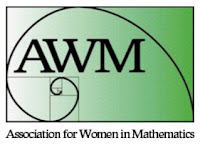One of my recent pleasant pastimes has been spending time with MANIFOLD: Poetry of Mathematics by E R Lutken. This poet's experiences prepare her well for merging different points of view -- a Southerner from a family that loved learning, Lutken became a family physician who spent years on the Navajo Nation AND then became a teacher of science and mathematics. Read more about Lutken and MANIFOLD here.
The "luc bat" is a Vietnamese poetic form that means "six-eight" --
Lutken's poem consists of alternating lines of six and eight syllables.
Ars Parabola by E R Lutken
Luc Bat for Horace and MacLeish
Can’t say what a poem is or not
but graph it and the plot
might trace that perfect spot for one
whose vertex taps the sun:
abscissa makes a run from rhyme
to none and metric time
devolves from frozen symmetry.
Equal distance of free
line and focal point defines sure
sense, logic’s stare obscured
as symbols play in pure sound’s bright
flare. White-hot words ignite
a sharp savor, the bite, the risk,
an ordinate of bliss.
"Ars Parabola" is from MANIFOLD, by E R Lutken, 3: A Taos Press, 2021, presented here with permission of 3: A Taos Press and the poet. The poem first appeared in Welter Literary Journal.








